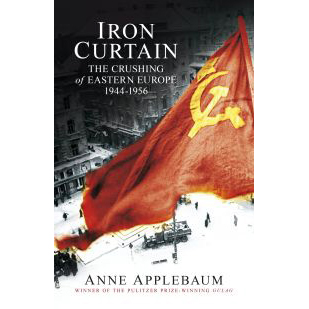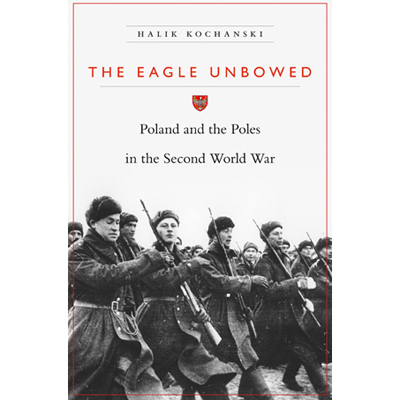 Hollywood’s War with Poland, 1939-1945
Hollywood’s War with Poland, 1939-1945
M. B. B. Biskupski
The University Press of Kentucky
Lexington, Kentucky 2009
Polish-American relations have been a hot topic recently. In December 2010, the President of Poland, Bronisław Komorowski, visited President Barack Obama in Washington and discussed the issue. During the last several years, Poles and Americans have negotiated Poland’s participation in an anti-nuclear Defense Shield and the deployment of American missiles in Poland. The results of all these and previous debates have been more than modest. On the ominous date of September 17, 2010, the 51st anniversary of the Soviet invasion of Poland, the Americans revoked the Defense Shield plan. Only training missile launchers have been sent to Poland, no real rockets. Polish participation in the wars in Iraq and Afghanistan seems to be unappreciated in Washington. Poland is the only member of the European Union whose citizens have to apply for visas if they want to visit the United States. An increasing number of Polish people find it disappointing and humiliating and ask the question: does America reciprocate Poland’s enthusiastic pro-American feelings?
Hollywood’s War With Poland, 1939-1945 by M. B. B. Biskupski (Lexington: The University Press of Kentucky, 2010) is an interesting supplement to numerous books and articles on Polish-American relations. It puts scholarly (and sometimes boring) analyses of diplomatic and political contacts in an interesting broader cultural context. It discusses very serious and complicated or even controversial issues, but, at the same time, is an interesting and, not infrequently, funny read.
Professor Biskupski holds the Stanislaus A. Blejwas Endowed Chair in Polish History at the Central Connecticut State University in New Britain. He is an experienced scholar and an author or co-author of more than ten books and many articles on the history of Poland, the United States, and international relations. He is also an ardent movie-goer and it seems that the idea of the book under review was sparked by the conflict between Biskupski’s hobby and patriotic feelings of an American of Polish origin.
The main thesis of the book is presented in the following first four sentences of the Preface:
Hollywood presented a fundamentally distorted and negative portrayal of Poland and Poles during the Second World War. An American citizen whose knowledge of the war was derived exclusively from the movies would be unsympathetic if not hostile to Poland and understanding if not supportive of Soviet policies directed against Poland’s sovereignty and territorial integrity. The number of Americans who fell into this category is impossible to determine, but it was doubtless large. Moreover, even for those for whom the movies were but one source of information, films had at least some effect, and for the Poles that effect was negative.
This thesis is a product of Biskupski’s meticulous research presented in the book. First, in the Introduction, he shows the influence that movies had on American society and explains the policies of the American administration, which was fully aware of the importance of this influence on the war effort and strictly controlled the film production. Then in chapter 1 (The Polish Presence in American Cinema before 1939), the author explains that, leaving aside a few meteoric careers epitomized by Pola Negri, there were no Poles in Hollywood before World War II, contrary to Jewish, Irish, and even Russian producers, directors, screenwriters and actors. Chapter 2 (Poland in the Second World War) offers a general historical background and Hollywood’s interpretations of historical events. Chapter 3 (Radical Hollywood and Poland) is devoted to the wartime strategies of the Communist Party of the USA and its activities in the movie industry. Biskupski proves that communists, “fellow travelers” or just supporters of the Left and enthusiasts of the Soviet Union were also present and active in the governmental bodies, which controlled or even censored or rewrote screenplays (Chapter 4. The Roosevelt Administration and Film during the War).
In Chapter 5 (Hollywood’s Version of the War: The Polish Films), Biskupski analyzes the only three wartime films set in Poland. The first of them, released in 1942 (!), offers a satirical approach to occupied Warsaw and the plight of the Jews. The second film presents “a catalog of Polish national faults” (p. 89) and portrays Poland as a medieval-like feudal state (still with serfdom) led by an incompetent and degenerated aristocracy before and after the outbreak of World War II. The third film, “hastily produced, underfunded, and unremittingly depressing” (p. 111) addresses the Holocaust and “was not really about Poland” (p. 117). Similarly, the films with small Polish episodes (Chapter 6. Poland: Fleeting, Ambiguous, or Omitted) portray Poles in a negative way, “pathetic rather than heroic” (p. 148). “They are all very dark, swarthy, and short” (p. 195). The last description has been taken from several screenplays. Biskupski read and analyzed several versions of dozens of screenplays and shows an interesting phenomenon. Even if a Polish character was positive and good looking in the original text, for instance a book that a Hollywood studio decided to put on screen, the following scripts, developed by screenwriters, made their Polishness increasingly vague, their behaviors less and less heroic or reasonable, and their looks more and more unappealing.
Even the documentary movies produced by Hollywood during the war were not better:
The cinematic version of Poland’s fate between 1939 and 1945 can be easily limned. A corrupt and reactionary regime cravenly attempting to appease the Nazis (In Our Time, To Be or Not to Be) dominates a country composed of backward peasants, venal shopkeepers, and ridiculous aristocrats (again In Our Time, and Once upon a Honeymoon). The country mistreats its Ukrainian minority so badly that they crave Soviet rule (The North Star). In September 1939 Poland is invaded by Germany and is overrun almost instantly (To Be or Not to Be, None Shall Escape) because of Poland’s reliance on cavalry (In Our Time, Why We Fight) and a disloyal population of fifth columnists (Once upon a Honeymoon, Why We Fight). The Soviet Union either does not invade or engages in the liberation of eastern Poland; either reading is acceptable (Why We Fight, The North Star). There is no organized resistance and no government-in-exile (To Be or Not to Be) (p. 159).
Chapter 7 (Hollywood and the American Poles during the War) and Chapter 8 (Why Hollywood Was at War with the Poles) explain why the Polish Americans were unable to stop the offensive trend in movie production. The last chapter also includes an interesting history of the Warner Brothers, who established and ran the largest and most influential studio in Hollywood. Even though we are uncertain about their original last name, we know that their parents, as well as one of the brothers, came to America from the village of Krasnosielc, north of Warsaw.
Biskupski’s conclusions are precise, well balanced, and convincing. “Certainly there was no conspiracy against Poland or the Poles.” (p. 216) True, there were many Polish Jews and communists in Hollywood. Most of them had no sympathy for Poland, and some of them, if they could do this as screenwriters and directors, portrayed the Poles unfavorably or eliminated them from screenplays altogether. The most important reason why Poland and Poles were absent from these screenplays or portrayed as inconsequential, reactionary, incompetent, and ugly was of geopolitical nature. After 1941, the Soviet Union became a crucial war ally of America and its movie industry and administration wanted to be friendly towards the Soviets. Many Americans admired the Soviet war effort and believed that they would help to win the war and organize the world according to the American scenarios. Poland, a victim of Soviet aggression and barbaric persecution, became an awkward topic. “Simply put, the American government could be either pro-Russian or pro-Polish; there was no compromise position. For reasons of realpolitik, it chose the former” (p. x). The American concept of World War II as “the good war” excluded moral ambiguity towards the crucial ally.
This opened a green light for the Hollywood Left. It believed that “Everything that hurt Poland helped Russia” and produced movies that resembled sometimes Soviet propaganda. “[S]ince, to the radical Left, Poland was fascist and opposed Russian designs on its territory and sovereignty by definition, the writers were effectively soldiers campaigning against Poland in Hollywood” (p. 229). The Polish community in America and the Polish government-in-exile were too weak to stop the trend. The prestige and image of Poland became victims of the cynicism and ruthlessness of American foreign policy.
Biskupski’s valuable book is not just a marginal treatise about Hollywood. It is also about international relations and America during World War II, about the Polish and Jewish immigration to the United States, about ethnic relations and the communist movement there. Hollywood’s War With Poland deserves better editing to remove some repetitions and statistical mistakes and better promotion to help appeal to both movie and history lovers.
CR




Professor M.B. Biskupski should do special lectures on YouTube bringing the truth home to Americans and all the world.
I strongly recommend in English Wikipedia LIST OF POLISH AMERICANS to see the grand Polish contribution to the USA.